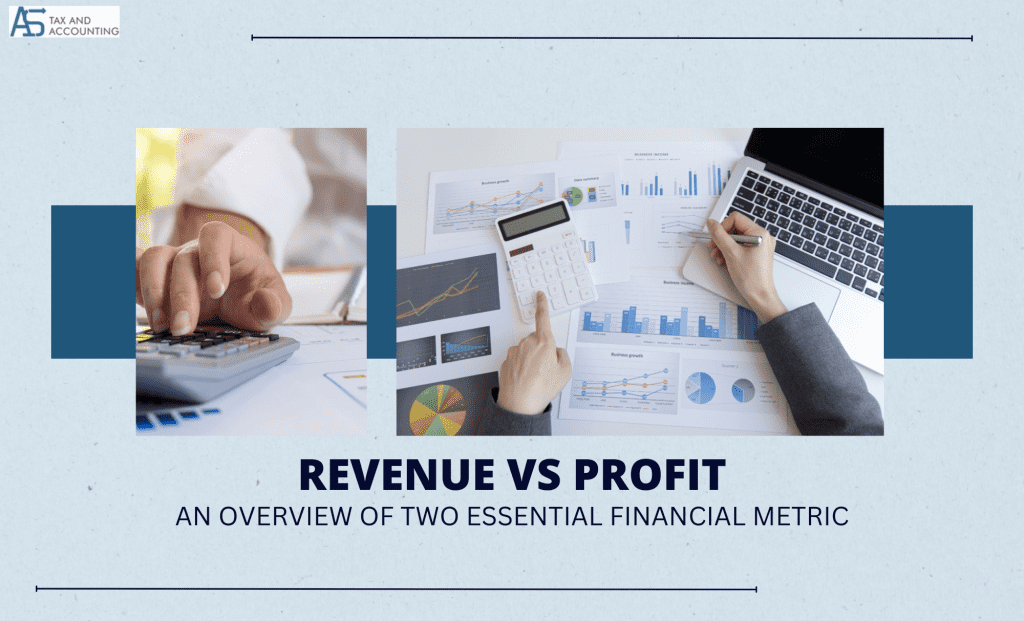The sum of total revenues over total expenses is calculated as net income, often known as net profit. In other words, it demonstrates how much money is still available for payment after covering all costs. It is also important to know how to find net income. Because this is the amount that the business can set aside for a rainy day, utilize to settle debt, invest in new initiatives, or provide to shareholders.
How to Find Net Income?
Net income is the profit that a company makes after accounting for all of its expenses and taxes. It is calculated by subtracting all of the expenses, including the cost of goods sold, operating expenses, interest expenses, and taxes, from the total revenue. Let’s look at the steps and discuss how to find net income:
● Firstly, gather the necessary financial statements, including the income statement, which shows the company’s revenue and expenses for the period.
● Find the revenue, also called sales or operating revenue, for the period. It is the total amount of money the company is earning from its operations.
● Subtract the cost of goods sold (COGS) from the revenue. COGS is the direct cost of producing the goods or services sold by the company. It includes materials, labor, and overhead costs.
● Subtract all of the operating expenses from the gross profit. Operating expenses include salaries, rent, utilities, and other expenses necessary to operate the business.
● Subtract any interest expenses, which are the costs of borrowing money, from the operating income.
● Subtract the income tax expense, which is the amount of tax owed to the government on the company’s earnings, from the income before taxes.
● The resulting number is the net income, which is the amount of profit that the company earned after accounting for all of its expenses and taxes.
What is the Formula for Calculating Net Income?
Net Income = Total Revenue – COGS – Operating Expenses – Interest Expense – Income Tax Expense
Net Income can also be impacted by non-operating activities, such as gains or losses from investments, which should be reported separately on the income statement.
What is Net Income?
Net income, also known as net earnings, is a measure of a company’s profitability. It represents the amount of money that a company earns after deducting all of its expenses from its total revenue. In simpler terms, net income is the amount of money that remains after paying all the bills.
● We can calculate net income by subtracting a company’s total expenses from its total revenue. Expenses include things like the cost of goods sold, salaries and wages, rent, utilities, taxes, and other operating expenses. Revenue includes all of the money that a company earns from its sales or services, as well as any other income it may receive from investments, royalties, or other sources.
● Once a company has calculated its net income, it can use this figure to determine how much money it has available to reinvest in the business, pay dividends to shareholders, or use for other purposes. Net income is an important measure of a company’s financial health and profitability. And also, investors, analysts, and other stakeholders closely look into it.
● It’s worth noting that net income can be affected by a variety of factors, including changes in sales volume, pricing, and expenses. For this reason, it’s important to evaluate net income over time and in comparison to industry benchmarks in order to gain a clear understanding of a company’s financial performance.
How to Find Net Income on the Balance Sheet?
Net income is typically not available on the balance sheet but rather on the income statement. The balance sheet provides a snapshot of a company’s financial position at a specific point in time, while the income statement shows the company’s performance over a period of time.

However, the net income from the income statement comes into use to calculate changes in retained earnings, which is a component of the balance sheet. Retained earnings represent the portion of a company’s profits that are not paid out as dividends but are instead kept by the company for future use.
To calculate the change in retained earnings on the balance sheet, you can use the following formula:
Beginning Retained Earnings + Net Income – Dividends = Ending Retained Earnings
However, in this formula, the beginning retained earnings are there on the previous period’s balance sheet. And the ending retained earnings are available on the current period’s balance sheet. Net income is there on the income statement. And dividends are present in the statement of cash flows or notes to the financial statements.
How to Find Net Operating Income?
Net operating income (NOI) is a measure of a company’s profitability from its main operations before considering taxes and other non-operating expenses. We can calculate it by subtracting operating expenses from operating revenues.
The formula for net operating income is:
Net Operating Income = Operating Revenue – Operating Expenses
Operating revenue includes all revenue generated by a company’s main operations, such as sales revenue or service revenue. However, operating expenses include all costs directly related to those operations, such as wages and salaries, rent, utilities, and depreciation.
To find net operating income, we will need to gather financial statements such as the income statement and the statement of cash flows. The operating revenue and operating expenses are there on the income statement.
Here are the steps to find net operating income:
● Locate the company’s income statement.
● Find the total operating revenue for the period.
● Find the total operating expenses for the period.
● Subtract the total operating expenses from the total operating revenue.
● The resulting number is the net operating income for the period.
Net operating income does not include any interest or taxes paid by the company, so it provides a more accurate measure of the company’s operational profitability. Thus, it comes in use in the real estate industry to measure the profitability of income-generating properties.
Net Income vs. Retained Earnings

If you want to grow your business, then net income and retained earnings both are necessary. Net income and retained earnings go hand in hand. In net income vs. retained earnings, retained earnings act as your company’s long-term savings account, with net income serving as a regular contribution.
The amount of money a corporation has left over after deducting operating costs from sales is known as net income (NI) or net earnings. However, when it comes to retained earnings, you have to subtract the dividend payments to shareholders.
FAQs
Net income is the amount of profit that a company has earned after accounting for all of its expenses and taxes.
Net income is an important metric for investors and stakeholders, providing insight into the company’s financial health and profitability.
To find net income, you need to subtract all of the expenses, including the cost of goods sold, operating expenses, interest expenses, and taxes, from the total revenue.
Net income is typically there on the income statement, which is a financial statement that shows a company’s revenue, expenses, and profits for a specific period.
The formula for calculating net income is Net Income = Total Revenue – COGS – Operating Expenses – Interest Expense – Income Tax Expense.
Yes, net income can be negative if a company’s expenses exceed its revenue. It is a net loss.
A company can increase revenue, reduce expenses, or do both to improve net income. We can do this by enhancing sales, cutting costs, or increasing efficiency.
- Author Details
- Latest Posts

I am Billie wilson, a financial analyst who loves to share knowledge. I believe that everyone deserves the opportunity to succeed and so I guide people in their journey to financial growth




